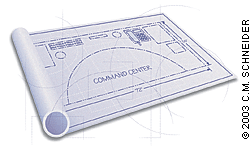
If you haven’t seen the surface of your desk in a while, try these strategies for clearing the clutter.
Fam Pract Manag. 2003;10(2):66

Have you ever attempted to bring order to a messy desk? If so, you probably got to work a little early, stacked all the papers and journals into one pile and then began going through them one by one, throwing out a few along the way. Your colleagues and staff probably smiled at your efforts, knowing that in two weeks you’ll go through the same drill again because you’ve forgotten what’s in the pile. There’s a better way.
Everything in its proper place
To organize your desk, begin by taking everything off it. Then, before doing anything further, set up a system incorporating the following:
A sort tray that serves as an entry point for papers, mail, journals, etc. While it’s similar to an “in box,” items should never return to the sort box once you look at them,
A priority tray for work that you consider important enough to complete within the next 24 to 48 hours,
A tickler file for items requiring future, but not immediate, action. Essentially, a tickler file is an expandable file sorter with 31 pockets for the days of the month as well as a pocket for each month of the year. Smead makes a good one. It’s available online at www.smead.com/Director.asp?NodeID=141,
Work-in-progress files for current projects.
This system of trays, ticklers and files is what you’ll use daily to keep yourself organized. You are now ready to sort through the pile you took off your desk. As you do, keep in mind this fact: 80 percent of what you decide to save, you’ll never look at again. If you can’t bring yourself to throw away something now, put it in a box. If, after three months, you haven’t looked inside the box, throw it and its entire contents away without opening it.
Tips for staying organized
Sorting through your papers and assigning them to specific action areas will get rid of the pile on your desk, but to remain organized, you’ll need to do the following:
Sit at your desk, take your index finger and draw an arc in the area immediately in front of you. This is your “command center” and should always be kept clear so you can focus your attention on whatever task is at hand.
Don’t keep anything on your desk that doesn’t require action. Remember, your desk is a workspace, not a storage space.
Keep your priority tray near your command center so you can’t overlook it.
Keep your sort tray where everyone can see it so papers don’t just land on any available space on your desk.
Forget the rule about handling a piece of paper only once. Most physicians don’t have time to act on every piece of paper immediately. Instead, move items from your sort tray into your work-in-progress or tickler files.
Print important e-mails and put them in your work-in-progress or tickler files. This will require less time than trying to retrieve them from your electronic mailbox later.
Use step files (files with graduated labels) so you can see all your work-in-progress files simultaneously. These are available at any office supply store.
Use binders, classification folders or expandable files with tab inserts to divide your project files. For example, if you’re doing committee work, divide that file into “Minutes,” “Committee Directory,” “Communications” and “Research.” Doing this will prevent you from having to comb through the entire file each time you need something.
Don’t set up files labeled, “To pay,” “To read,” “To write,” “To send,” “To whatever.” I guarantee you will end up with a lot of overweight manila file folders on your desk that you never open.
Controlling clutter
Dealing with the paperwork that accompanies your profession can be frustrating, but it may be less so if you keep your desk in good working order. True organization requires a paper management system that actually moves what is on your desk off of it. Without this system, all you’re really doing is tidying up.